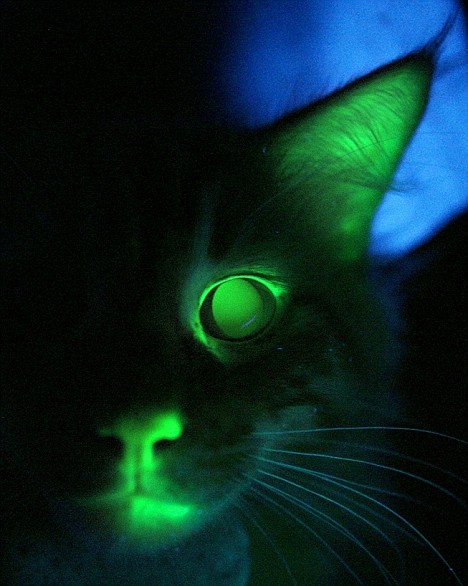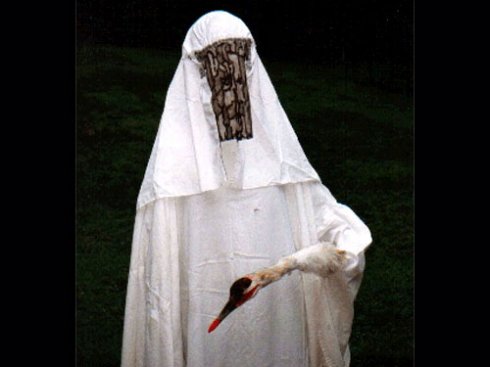Science Generation

In 2008, scientists at the Audubon Center for Research of Endangered Species found themselves the proud surrogate-parents of Mr Green Genes, above.
They modified his DNA to see if a gene could be introduced harmlessly into an animal’s genetic sequence.
To track where the gene went, they decided to use one that glowed under ultraviolet light.
The particular gene in question, known as green fluorescence protein, is likely to express itself in mucous membranes – hence his freakish mouth and ears. – The Daily Mail
This was just the beginning of a larger plan, however, and the center has recently built on the research with a follow-up: Son Of Green Genes.
“When we saw Kermit we all cheered because we knew then that the genes were passed on,” Dr. Dresser said. “Using this trans-genetic model we are hoping to save a lot of these endangered cats by transferring genes that are good genes.” – neworleans.com
That’s right, there’s now a modified breed of cats that will freak out anyone who happens to wave a UV light near them – but so what?
Well, I largely bring it to your attention due to it’s inherent neatness, but also because Dr. Dresser, mentioned above, is, in my opinion, the closest thing we have to a modern mad scientist.
I realize it isn’t the same as having eerie samples in jars, but she maintains a gene bank!
And have you ever heard of a frozen zoo? Inside several metal containers, scientists have preserved the DNA from hundreds of exotic animals. It’s all an effort to save the species from extinction. – neworleans.com
– and, do you recall that disturbing-looking crane-feeding costume I discussed a while ago?

That whole project was the work of Betsy Dresser’s hand!
Oh, go ahead and laugh – but, one evening you’ll be out on a midnight stroll with a loved one, gazing at the ponderous moon and exchanging naughty words, when you’ll hear it in the distance: a tiny mewl.
Seconds later, you’ll be inundated by thousands of glow-in-the-dark attack-kittens, deployed by swarms of specially trained whooping cranes.
Within moments you’ll be gone, devoured by a multitude of rough-tongued mouths, but, somewhere in the distance, Betsy Dresser will be recording the results, and preparing a submission for another research grant.

Leave a Reply